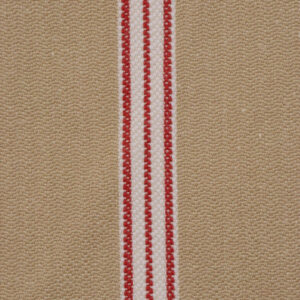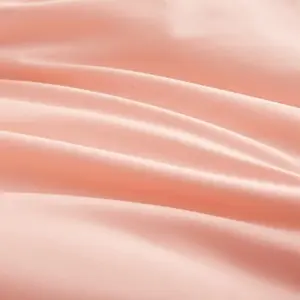What Are the Pros and Cons of Mixing Cotton and Rayon?
Fabric compatibility is crucial in fashion and sewing, as it influences the quality and longevity of garments. Cotton and rayon are popular fabrics, each with unique properties. This article explores their compatibility, benefits, challenges, and practical tips for combining them effectively.
Compatibility Analysis
Can You Mix Cotton and Rayon? Yes!
Cotton and rayon can be mixed successfully, thanks to their complementary properties. Both fabrics are lightweight and breathable, making them suitable for various garments. However, attention to texture, weight, stretch, care requirements, and durability is essential to ensure a harmonious blend.
Key Factors
- Texture & Weight: Cotton is soft and sturdy, while rayon is smooth and drapes well. Together, they create a fabric that is both comfortable and visually appealing.
- Stretch & Elasticity: Rayon offers more stretch, which can enhance the comfort of cotton’s more rigid structure.
- Care Requirements: Both fabrics require gentle care, though rayon is more delicate.
- Durability: Cotton is durable, whereas rayon is prone to wear. Combining them can balance these traits.
Fabric Properties Comparison Table
| Property | Cotton | Rayon |
|---|---|---|
| Fiber Content | Natural | Semi-synthetic |
| Weight and Thickness | Medium | Light to medium |
| Breathability | High | High |
| Moisture-wicking | Moderate | High |
| Stretch and Elasticity | Low | Moderate |
| Wrinkle Resistance | Low | Moderate |
| Care Instructions | Machine wash, warm or cold | Hand wash or gentle cycle |
| Durability | High | Moderate |
Benefits of Mixing These Fabrics
- Enhanced Texture and Visual Interest: The combination of cotton’s matte finish with rayon’s sheen adds depth to garments.
- Improved Comfort and Performance: The breathability of both fabrics ensures comfort in various climates.
- Better Drape and Movement: Rayon’s fluidity enhances the structure of cotton, providing an elegant flow.
- Cost-Effectiveness: Mixing these fabrics can reduce costs while maintaining quality.
- Seasonal Versatility: Suitable for all seasons due to their breathable nature.
- Design Possibilities: Offers diverse styling options from casual wear to formal attire.
Potential Challenges
- Different Shrinkage Rates: Pre-wash fabrics to minimize discrepancies.
- Conflicting Care Requirements: Opt for the gentlest care method suitable for both.
- Texture Clash or Pilling: Use high-quality fabrics to reduce pilling.
- Seam Puckering: Utilize proper sewing techniques to avoid puckering.
- Color Bleeding or Fading: Test for colorfastness before combining.
Practical Solutions
- Pre-wash fabrics separately.
- Use a pressing cloth when ironing.
- Implement French seams or serging for a clean finish.
Sewing & Styling Tips
- Best Sewing Techniques: Use a straight stitch with a slightly longer length to accommodate rayon’s stretch.
- Needle and Thread Recommendations: Use a universal needle size 80/12 and polyester thread for strength.
- Interfacing and Stabilizer Needs: Lightweight interfacing works best for added stability.
- Seam Finishing Methods: Employ French seams or overlock stitches.
- Pattern Selection Advice: Choose patterns that highlight the drape of rayon and the structure of cotton.
- Styling Ideas: Pair cotton-rayon blend tops with denim for a casual look or use them in flowy dresses for an elegant appearance.
Care & Maintenance Guide
- Washing Instructions: Use cold water and a gentle cycle or hand wash.
- Drying Recommendations: Air dry or tumble dry on low heat.
- Ironing and Steaming Tips: Use a low heat setting and a pressing cloth.
- Stain Removal: Treat stains promptly with mild detergent.
- Long-term Care: Store garments in a cool, dry place to prevent damage.
FAQ Section
- Can you wash cotton and rayon together? Yes, but use a gentle cycle and cold water.
- Will rayon shrink more than cotton? Rayon is more prone to shrinkage, so pre-washing is recommended.
- What needle size should I use for sewing these fabrics together? A universal needle size 80/12 is ideal.
- Can you mix cotton and rayon in one garment? Absolutely, they complement each other well.
- How do you prevent seam puckering when combining these fabrics? Use a slightly longer stitch length and proper tension.
- Is it okay to mix cotton and rayon for upholstery? Yes, but ensure the blend is durable enough for the intended use.
- What’s the best way to finish seams with these fabrics? French seams or overlocking provide a neat finish.
By understanding the compatibility and nuances of mixing cotton and rayon, you can create garments that are stylish, comfortable, and durable. Whether sewing for fashion or home decor, this blend offers a versatile and appealing option.



Leave a Reply